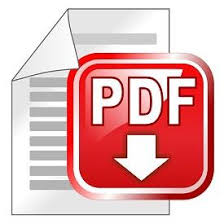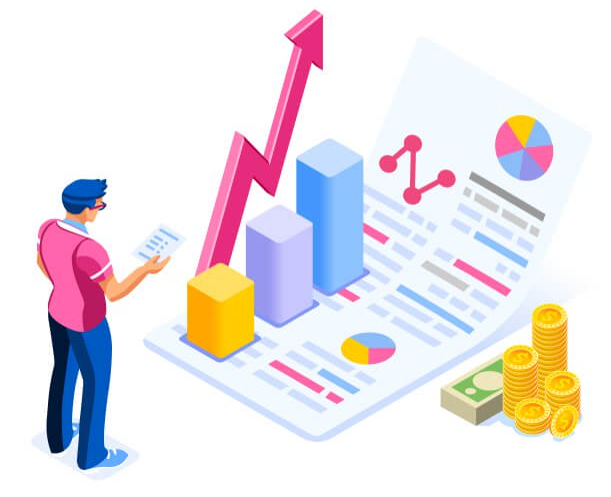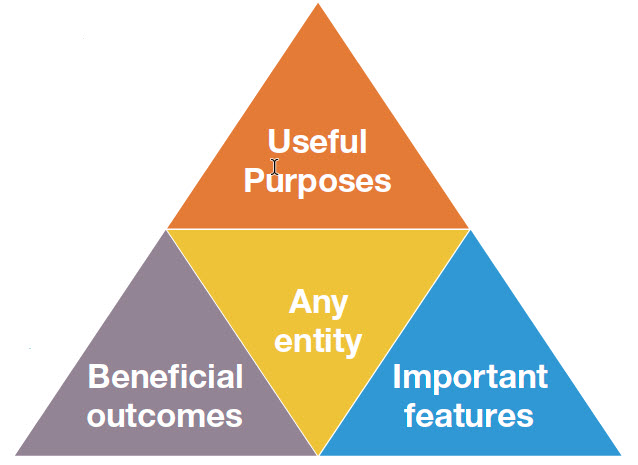Location:
PMKI > Organizations
& Governance > Value and Benefits
Realization.


- Value and Benefits Overview
- Defining project
success
- Benefits Management
- Value Management and Value
Engineering
- Useful External Web-links &
Resources.
Other related sections of the PMKI:
- For more on
project/program selection and prioritization see
Portfolio
Management.
 Value
and Benefits Realization are closely linked. When
benefits are realized, that support the objectives of the
organization, value is created. Both are directly linked
to organizational governance, the Organization for
Economic Co-operation and Development in the OECD
Principles of Corporate Governance 2004 define
governance as: ‘involving a set of relationships between a
company’s management, its board, its shareholders and
other stakeholders. Corporate governance also provides the
structure through which the objectives of the company are
set, and the means of attaining those objectives and
monitoring performance are determined’. Sir Adrian Cadbury
summarized the aim of governance as: 'to align as nearly
as possible the interests of individuals, organizations
and society'.
Value
and Benefits Realization are closely linked. When
benefits are realized, that support the objectives of the
organization, value is created. Both are directly linked
to organizational governance, the Organization for
Economic Co-operation and Development in the OECD
Principles of Corporate Governance 2004 define
governance as: ‘involving a set of relationships between a
company’s management, its board, its shareholders and
other stakeholders. Corporate governance also provides the
structure through which the objectives of the company are
set, and the means of attaining those objectives and
monitoring performance are determined’. Sir Adrian Cadbury
summarized the aim of governance as: 'to align as nearly
as possible the interests of individuals, organizations
and society'.
(see more on
organizational governance)
Value creation by a project or program follows this general pattern:
Input->Process->Output->Deliverable->Outcome->Benefit->Value
Within this framework 'value' has a wide range of definitions and because the value proposition is ‘in the eye of the stakeholder’ different stakeholders will value different aspects of the same project. Effective value management requires an understanding of what is valuable to the organization, as well as its key stakeholders, and then managing the overall 'value chain' to successfully deliver these values. Generating sustainable value for an organization's stakeholders firstly requires the right projects to be done for the right reasons; and yes, they also need to be done right! Then the organizational change management processes need to ensure the deliverables are used in the right way to create the intended benefits and generate the expected value. Doing the wrong projects right helps no-one.
The Theory of Change (ToC) expresses this in the form of Input->Process->Output->Outcome->Impact where 'outcome' is synonymous with 'benefits' and 'impact' with value. This chain often forms the basis of various project success frameworks developed in project management research on project success. The management requirements to achieve these objectives are a value focused strategic plan linked to a sensible portfolio management process, supported by a practical 'project/value delivery capability'.
Organizational Change Management are the processes and systems used to reshape the organization and achieve its strategic objectives - see more on Organizational Change Management.
Benefits Management are the steps taken by the organization to ensure the value intended to be achieved from an investment in a project or program are achieved - See below.
Value Management (or Value Engineering) is a structured planning and review process designed to achieve best value or, where appropriate, best value for money from the project or program - See below.
WP: Outputs, Outcomes and Benefits. The relationship between goals, objectives, outputs, deliverables, outcomes, benefits and value.
WP: Benefits and Value. Benefits management and the value chain between the creation of a deliverable and the creation of quantifiable value.
Blg: Linking Innovation to Value. This post takes a closer look at innovation, which is the critical ‘front end’ of the value chain. It does not matter how well you do the wrong projects and identifying the 'right ones' needs creativity, innovation and discipline!
Click through to see more on creativity.
Click through to see more on innovation.
 Project
success is more than being 'on time' and 'on
budget'. A project is successful if it is seen as
successful by its stakeholders, and they value the
outcome.
Project
success is more than being 'on time' and 'on
budget'. A project is successful if it is seen as
successful by its stakeholders, and they value the
outcome.
We support the 2024 definition developed by PMI: Project Success: The consensus view across intended beneficiaries, other stakeholders, and project participants that a project was [is] perceived to have delivered value that was worth the effort and expense.
Blg: Defining project success Explains how PMI's definition of project success was developed and introduced the GNPSS.
Art: Achieving Real Project Success. There are at least three different criteria for success that can operate independently: Project Management Success, Technical Success and Business Success.
Blg: Defining project success – moving beyond benefits realization! Project success appears to be a complex, emergent, characteristic that manifests after the work of the project has been completed - this makes managing for success difficult.
Blg: Defining Project Success using Project Success Criteria. Project success can be ephemeral – successful organizations work to define success so they know when it has been achieved!
Blg: Measuring Project Success This post looks at the wider question of measuring project success in the context of the new Elizabeth Line in London as it approaches completion some 4 ½ years after the original planned opening date in December 2018 and £4+ Billion over budget. But with more than 100 million journeys made in the first year, currently around 600,000 journeys every day, the line has been declared a success. The patronage is above forecast levels and the project is on track to break even by the end of the 2023/24 financial year.
Blg: Sydney Opera House – Finished at last. Project success can change over time. This post tracks the Sydney Opera House through to its final completion in 2022.
PP: Avoiding the Successful Failure! Delivering to time, cost and scope may not be enough, the value of a project is determined by its end users and may change over time.
Art: Do 80% of organizations average a project failure rate of 80%? This article highlights an intriguing anomaly in the data that could benefit from some structured research. If, as one view of the data suggests, some 80% of organizations have project failure rates in the region of 80%. Based on the same data, some 75% of executives in the 80% of organizations that routinely fail to deliver projects successfully appear to believe the opposite? If the surveys are aligned, and accurate, there is a significant project governance challenge to overcome.
Prs : Governing to Create Value: An organizational perspective on effective project management. Governance is more than compliance. The purpose of covering any organization is provide effective stewardship of the resources being governed to provide sustainable benefits for the relevant stakeholders.
 The
role of the project manager in the delivery of benefits
depends on the nature of the project. There are two quite
different scenarios:
The
role of the project manager in the delivery of benefits
depends on the nature of the project. There are two quite
different scenarios:
Commercial projects. The PM is largely responsible for realizing the expected benefits for his/her organization where the project is a commercial project delivered to a customer. The organization would expect a profit from the project and a happy client leading to the opportunity for future work from that client. The project manager is unlikely to be responsible for setting the contract price and other conditions so the ability to achieve the expected benefits are constrained by prior decisions. But in general terms in this situation, the benefits are realized by the performing organization at the end of the project and the project manager is a key player in realizing the benefits expected by the contractor.
Internal projects. These are completely different! In this situation, the project manager is part of a value delivery chain. Other managers are responsible for determining the organization's strategy, and setting the project framework before work starts. Then later, a different set of managers are responsible for using the project's deliverables as part of the organization's operations to realize the intended benefits and create value. Project decisions can enhance or destroy the organizations ability to realize the intended benefits once the project's deliverables are handed over, but very few benefits are likely to be realized during the work of the project. This means the project manager needs to be acutely aware of the effect of each decision on the overall achievement of benefits but is not directly responsible for realizing most of them. In short, project decisions can destroy benefits and on occasions enhance the opportunity for the realization of benefits in the future (a key stakeholder engagement consideration), but the project manager is more of a facilitator, than the person responsible for actually realizing the expected benefits.
Blg: Who Manages Benefits? The various managers and other stakeholders involved in managing the realization of benefits.
Prs: Who Really Benefits? Value is in the eye of the stakeholder! Developing a realistic and achievable benefits management plan requires understanding which stakeholders really matter and discovering what is really important to them.The only purpose of undertaking any business activity is to create value! But the realization of any value proposition is ‘in the eye of the stakeholder’ and effective benefits management requires a clear understanding of what is valuable to the organization and its stakeholders. Some projects generate significant intangible benefits such as reduced risk, enhanced prestige or in the case of regulatory requirements, the simple ability to keep trading; others are focused on generating a positive financial return, most generate a combination of financial and intangible returns. These outcomes are rarely constrained by either time or cost, although both can be a factor.
The challenge at all stages of the value chain from the strategic planning phase through to realizing the benefits from a specific project or program is knowing who is important at this point in time and what constitutes 'value' from their perspective - value may be ‘in the eye of the stakeholder’ but you need to be sure you are listening to the right stakeholders and balancing their competing requirements effectively. This presentation focuses on techniques to understand which stakeholders really matter and discovering what is really important to them. From this basis, a realistic and achievable benefits management plan can be crafted and monitored.
WP: Developing a Business Case. The business case should define the value the project will create if successful, to justify its cost. However, the project manager cannot be held directly responsible for delivering value to the organization.
Art: Stop Throwing Money Away! The effect of sunk costs and emotions on the decision to kill a project.
 Value
Management is a structured analytical process focused on
achieving the best value and, where appropriate, best
value for money in products, processes, services, systems
and organizations.
Value
Management is a structured analytical process focused on
achieving the best value and, where appropriate, best
value for money in products, processes, services, systems
and organizations.
The concepts of concepts of Value Analysis, Value Engineering and Value Management were developed from the work of Lawrence J. Miles, working for General Electric during material-supply shortages following the end of World War Two. His insight was that what people really want is not so much the product itself, but to benefit from the function that the product performs - its 'primary purpose'.
Art: What is the value of value? Value is a concept that is unique to each organization and encompasses the total sum of all tangible and intangible ‘value elements’.
Art: Who values value? Assessing and measuring the full value of a proposal in the unique context of each organization.
Art: Creating Value from Change. The different roles involved in generating value from the change created by a project. The relationship between project deliverables and the creation of organizational value are discussed in WP: Organizational Change Management.
Art: Performance Management - the creation of value. Value is maximized when the organization's objectives, strategy and project delivery are aligned.
Best Management Practice products, UK Government
(formally OGC, now Axelos) - the umbrella site dedicated
to making access to information quick and easy - https://www.axelos.com/
- MoV - Value Management:
https://www.axelos.com/best-practice-solutions/mov
Institute of Value Management Australia: The IVMA is Australia’s peak body for the definition of value and the achievement of best value for money - http://www.ivma.org.au/
SAVE International - SAVE is the premier international society devoted to the advancement and promotion of value engineering, value analysis and value management (the value methodology): https://www.value-eng.org/
AS4813:2007 - Value Management. VM is a structured analytical process focused on achieving the best value and, where appropriate, best value for money in products, processes, services, systems and organizations.
BS 202002:2023 - Applying benefits management on portfolios, programmes and projects. Organizations invest resources in projects to get benefits. BS 202002:2023 is a new British standard on how to deliver the planned benefits for the organization and its customers. https://knowledge.bsigroup.com/products/applying-benefits-management-on-portfolios-programmes-and-projects-guide
 For papers on Value and Benefits Realization presented
at the PGCS Annual Symposium see:
For papers on Value and Benefits Realization presented
at the PGCS Annual Symposium see: